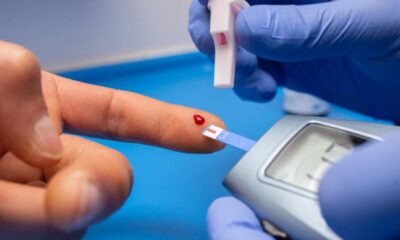Diabetology
The Role of Continuous Glucose Monitoring in Diabetes Management
Published
1 year agoon
By
Robert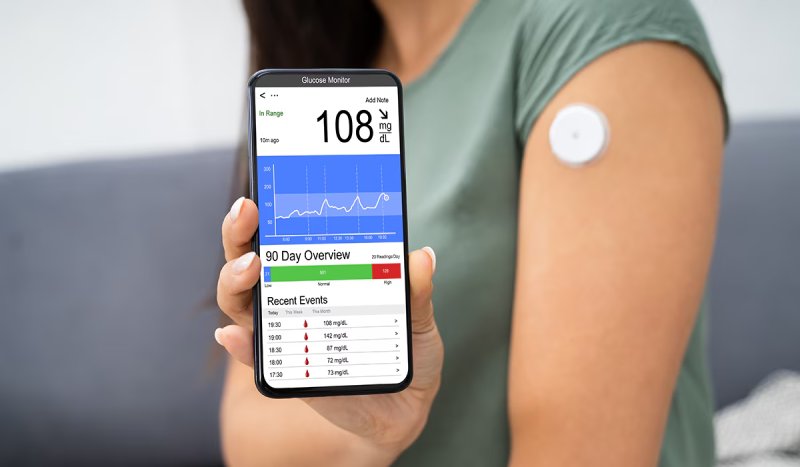
Diabetes is a chronic condition that affects millions of people worldwide, characterized by the body’s inability to regulate blood glucose levels effectively. Proper management of blood sugar is crucial in preventing complications associated with diabetes, such as cardiovascular diseases, kidney damage, and nerve damage. Traditionally, diabetes management has relied on intermittent blood glucose monitoring through finger-prick tests. However, this method provides only snapshots of blood sugar levels at specific times, often missing fluctuations throughout the day and night. Continuous Glucose Monitoring (CGM) has emerged as a revolutionary tool in diabetes management, offering real-time insights into glucose levels and trends.
CGM systems have become a cornerstone in diabetes care, particularly for those with Type 1 diabetes and insulin-dependent Type 2 diabetes. Unlike traditional methods, CGM provides continuous data, allowing for a more comprehensive understanding of glucose patterns and enabling timely interventions. This article explores the role of CGM in diabetes management, its benefits, challenges, and future directions.
Understanding Continuous Glucose Monitoring (CGM)
What is CGM?
Continuous Glucose Monitoring (CGM) is a technology that automatically tracks blood glucose levels throughout the day and night, allowing users to see their glucose levels at any given moment. A CGM system consists of three main components: a sensor, a transmitter, and a receiver. The sensor is inserted under the skin and measures glucose levels in the interstitial fluid. The transmitter sends this data wirelessly to the receiver, which can be a dedicated device, smartphone, or smartwatch.
How CGM Works
The sensor in a CGM system continuously measures glucose levels in the interstitial fluid, which is the fluid surrounding the cells in the tissue. While interstitial glucose levels lag behind blood glucose levels by about 5-10 minutes, CGM systems are calibrated to provide accurate readings. The data is transmitted every few minutes to the receiver, where it is displayed in real-time, along with trends and patterns over the past hours and days. Many CGM systems also include alarms that alert users when their glucose levels are too high or too low.
CGM vs. Traditional Monitoring
Traditional blood glucose monitoring, typically done through finger-prick tests, only provides glucose readings at the time of testing. This method can miss significant fluctuations in glucose levels, particularly during the night or between tests. CGM, on the other hand, offers continuous insights, allowing for better glucose control and more informed decision-making.
Types of CGM Devices
Several CGM devices are available on the market, each with its unique features. Popular CGM systems include the Dexcom G6, the FreeStyle Libre, and the Medtronic Guardian Connect. These devices vary in terms of sensor wear time, calibration requirements, and data display options. Choosing the right CGM device depends on individual needs, preferences, and healthcare provider recommendations.
Benefits of Continuous Glucose Monitoring
Real-Time Monitoring
One of the primary benefits of CGM is real-time glucose monitoring. Users can see their glucose levels at any moment, along with trends showing whether levels are rising, falling, or stable. This real-time data enables immediate action, such as adjusting insulin doses, eating a snack, or exercising to bring glucose levels within target ranges.
Improved Glycemic Control
Studies have shown that CGM users often achieve better glycemic control compared to those using traditional monitoring methods. The continuous data allows for more precise insulin dosing, reducing the risk of hyperglycemia (high blood sugar) and hypoglycemia (low blood sugar). Over time, CGM use has been associated with lower HbA1c levels, a key indicator of long-term glucose control.
Hypoglycemia Prevention
Hypoglycemia is a common and potentially dangerous complication of diabetes, especially for those on insulin therapy. CGM systems can help prevent hypoglycemia by providing early warnings when glucose levels are dropping. Some CGM devices can even predict when hypoglycemia is likely to occur, allowing users to take preventive measures before their glucose levels become dangerously low.
Data-Driven Decision Making
CGM provides users with a wealth of data that can be used to make informed decisions about their diabetes management. For example, users can track how their glucose levels respond to different foods, exercise, stress, and medications. This data can help identify patterns and triggers, leading to more personalized and effective diabetes management strategies.
Quality of Life Improvements
The convenience and peace of mind provided by CGM can significantly improve the quality of life for people with diabetes. Knowing their glucose levels in real-time and having the ability to make immediate adjustments can reduce anxiety and fear related to blood sugar management. CGM also offers more flexibility in daily activities, such as exercise, travel, and social events, without the constant need for finger-prick tests.
Challenges and Limitations of CGM
Cost and Accessibility
One of the major challenges of CGM is its cost. CGM systems can be expensive, and not all insurance plans cover them. This can make CGM inaccessible to many people with diabetes, particularly those in low-income populations or in regions where healthcare resources are limited.
Technical Limitations
While CGM technology has advanced significantly, it is not without its limitations. Some users may experience issues with sensor accuracy, particularly during rapid changes in glucose levels. Calibration is still required for some CGM devices, and sensor failures or skin irritation can occur.
User Compliance and Education
Effective use of CGM requires a certain level of user compliance and education. Users need to understand how to interpret the data, respond to alarms, and make necessary adjustments to their treatment plan. Without proper training and support, users may become overwhelmed or fail to use the device effectively.
Data Overload
The continuous stream of data provided by CGM can be overwhelming for some users. Interpreting this data requires time, attention, and sometimes assistance from healthcare providers. There is also a risk of becoming overly focused on the numbers, leading to stress or anxiety.
The Impact of CGM on Different Populations
Type 1 Diabetes
CGM has become a standard of care for many individuals with Type 1 diabetes. The ability to continuously monitor glucose levels is particularly beneficial for those who require intensive insulin therapy. CGM can help these individuals maintain tighter glycemic control, reduce the frequency of hypoglycemic episodes, and improve their overall quality of life.
Type 2 Diabetes
While CGM was initially developed for people with Type 1 diabetes, it is increasingly being used in the management of Type 2 diabetes, especially for those on insulin therapy. CGM can help these individuals better understand how their glucose levels respond to different factors, leading to more effective treatment plans and improved outcomes.
Gestational Diabetes
CGM is also being used to monitor and manage gestational diabetes, a condition that can develop during pregnancy. Continuous monitoring can help pregnant women maintain stable glucose levels, reducing the risk of complications for both the mother and the baby.
Pediatric Use
Children and adolescents with diabetes can benefit significantly from CGM, as it can help parents and caregivers monitor glucose levels without frequent finger-pricks. This can reduce the stress and discomfort associated with traditional monitoring methods and provide more accurate data for managing diabetes in young patients.
Elderly Population
The elderly population with diabetes can also benefit from CGM, particularly those who may have difficulty performing frequent finger-prick tests due to physical limitations. CGM can help them maintain better glucose control and reduce the risk of complications associated with diabetes.
The Future of Continuous Glucose Monitoring
Advancements in Technology
The future of CGM looks promising, with ongoing advancements in sensor technology, device integration, and data analytics. Next-generation CGM systems are expected to be more accurate, less invasive, and easier to use. For example, some companies are developing implantable sensors that can last for several months without needing replacement.
Integration with Insulin Pumps
One of the most exciting developments in CGM technology is its integration with insulin pumps to create a closed-loop system, also known as an artificial pancreas. This system automatically adjusts insulin delivery based on CGM data, significantly reducing the burden of diabetes management and improving glycemic control.
Personalized Diabetes Management
As CGM technology continues to evolve, it is expected to play a key role in personalized diabetes management. By combining CGM data with other health metrics, such as activity levels and diet, healthcare providers can create highly individualized treatment plans that optimize outcomes for each patient.
Telemedicine and Remote Monitoring
The COVID-19 pandemic has accelerated the adoption of telemedicine and remote monitoring, and CGM is well-suited for this trend. With CGM data being transmitted to healthcare providers in real-time, patients can receive timely advice and adjustments to their treatment plan without the need for in-person visits.
Regulatory and Insurance Trends
As the benefits of CGM become more widely recognized, regulatory bodies and insurance companies are likely to expand coverage for CGM devices. This will make CGM more accessible to a broader range of people with diabetes, further enhancing its impact on public health.
Conclusion
Continuous Glucose Monitoring has transformed the landscape of diabetes management, offering real-time insights, improved glycemic control, and a better quality of life for millions of people. While challenges remain, particularly in terms of cost and accessibility, the benefits of CGM are undeniable. As technology continues to advance, CGM is set to play an even more significant role in personalized diabetes care, helping to prevent complications and improve outcomes for people with diabetes around the world.
You may like
-


Morning Routine for Diabetics: Simple Steps to Stabilize Blood Sugar
-
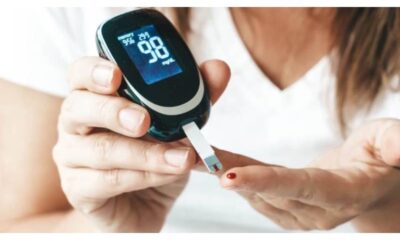

Diabetes Management: Effective Strategies to Control Blood Sugar Naturally
-


Diabetes Awareness in Children: Early Habits That Matter
-
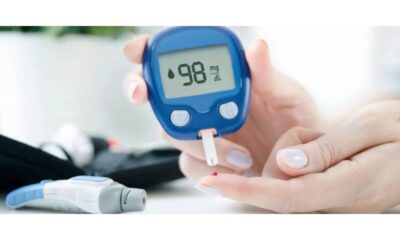

Importance of Regular Blood Sugar Monitoring
-
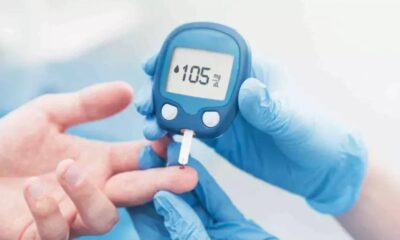

WHO Issues New Guidelines for Better Diabetes Management in 2025
-


The Link Between Blood Sugar and Overall Wellness
The Latest News
- Best Low-Glycemic Sweeteners for Diabetics: A Healthier Choice
- Effect of Physical Activity on Blood Sugar and Diabetes
- High Blood Sugar Symptoms: 10 Common Signs You May Have Diabetes
- Daily Routine for Diabetics: A Complete Guide to a Healthy, Balanced Day
- Morning Routine for Diabetics: Simple Steps to Stabilize Blood Sugar
- Diabetes and Heart Disease Connection: Early Signs, Risks & Prevention
- Reversing Type 2 Diabetes: What the Latest Research Says in 2025

Best Low-Glycemic Sweeteners for Diabetics: A Healthier Choice

Effect of Physical Activity on Blood Sugar and Diabetes

High Blood Sugar Symptoms: 10 Common Signs You May Have Diabetes

Lung growth invading Treg have different transcriptional profiles and capability connected to designated spot bar reaction

Psoriasis be treatment by adjuvant Salicylic acid, ceramides as this containing lotions


